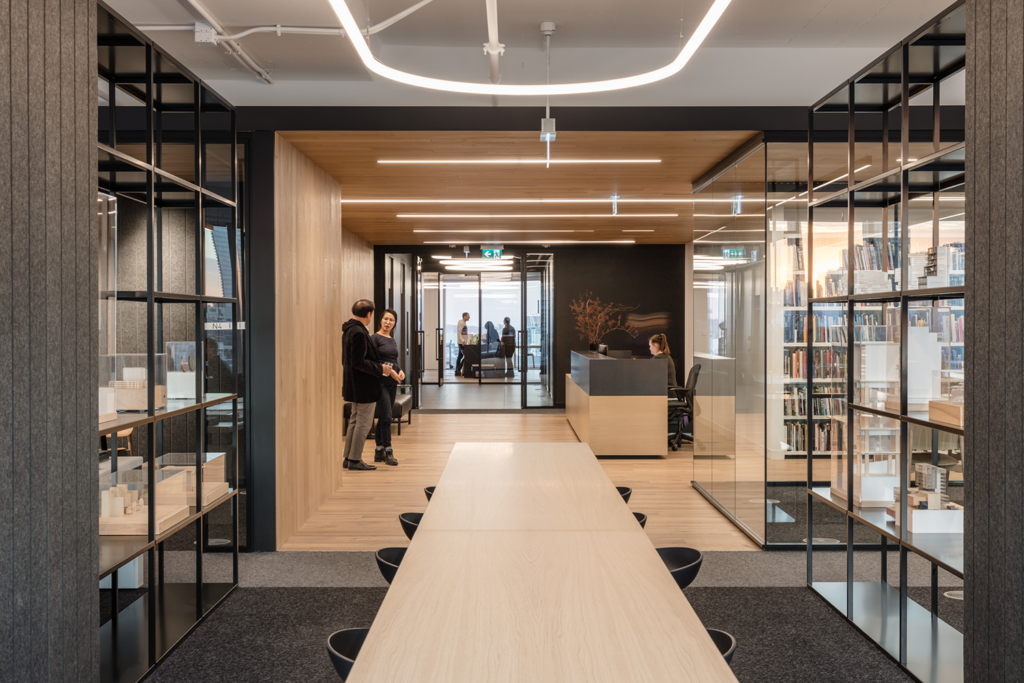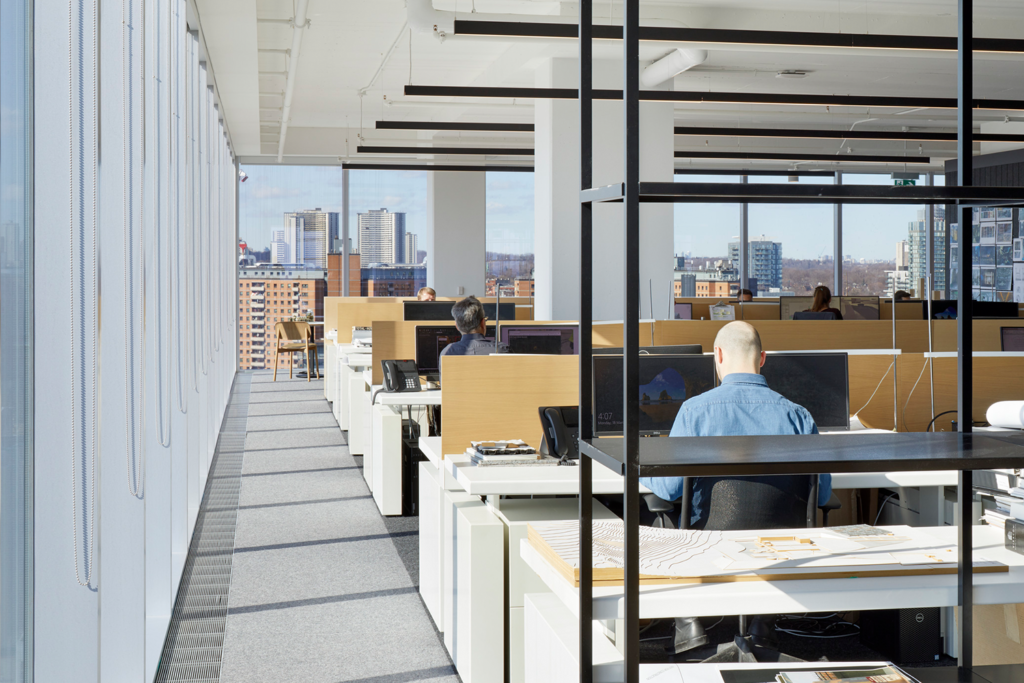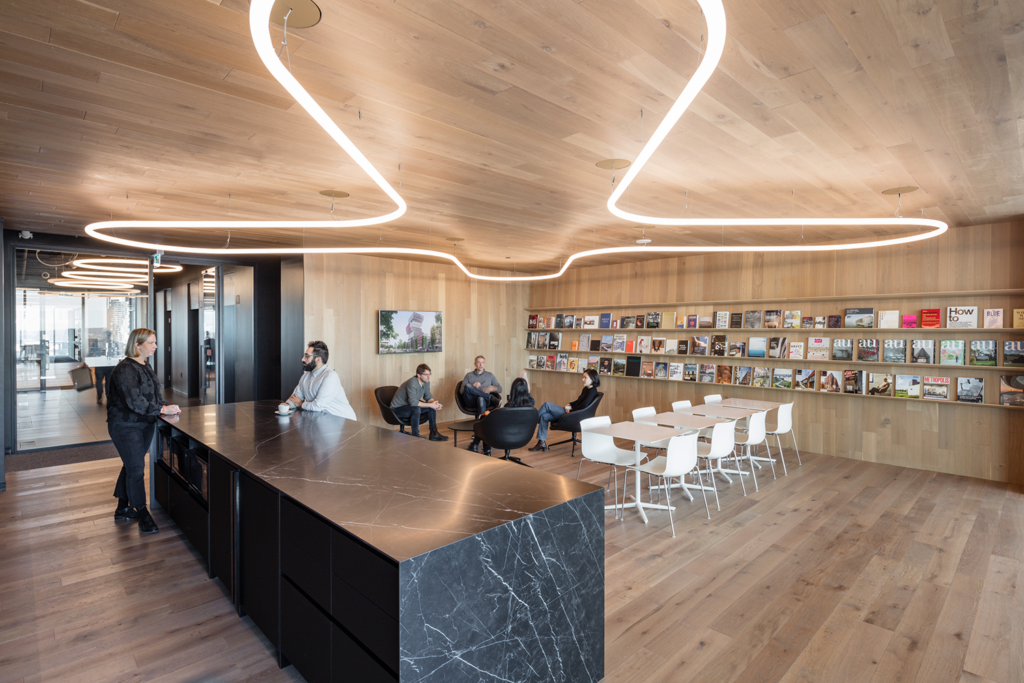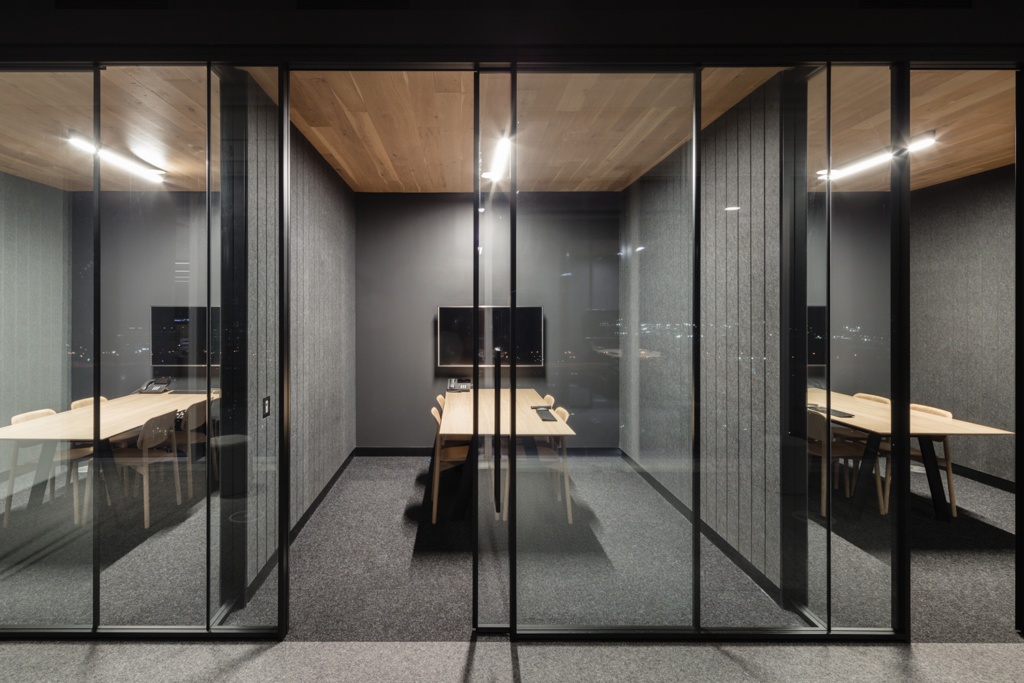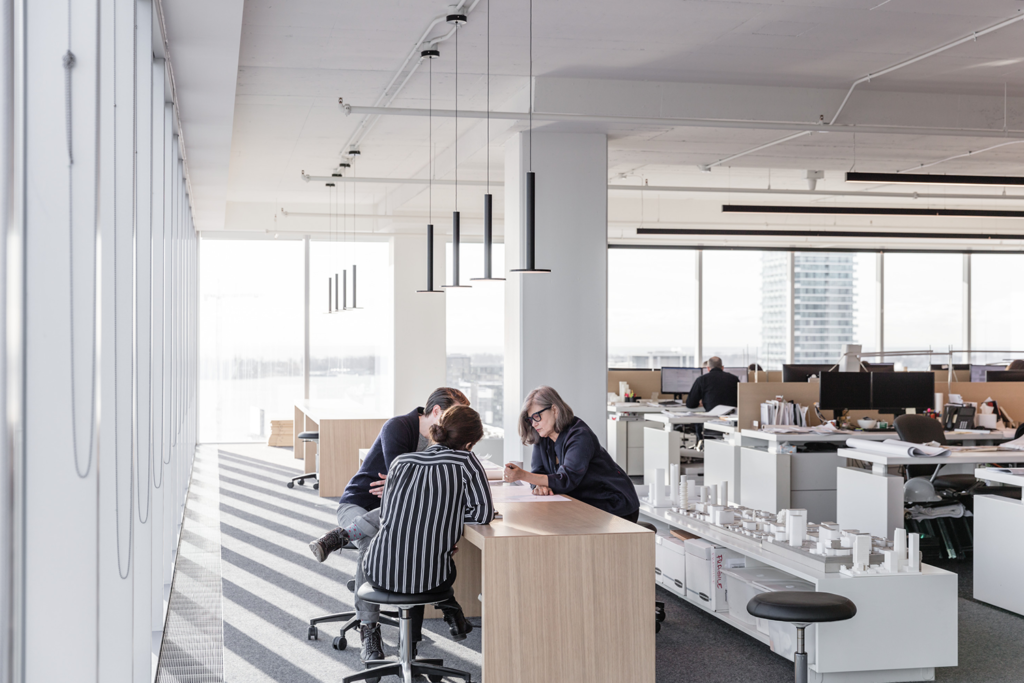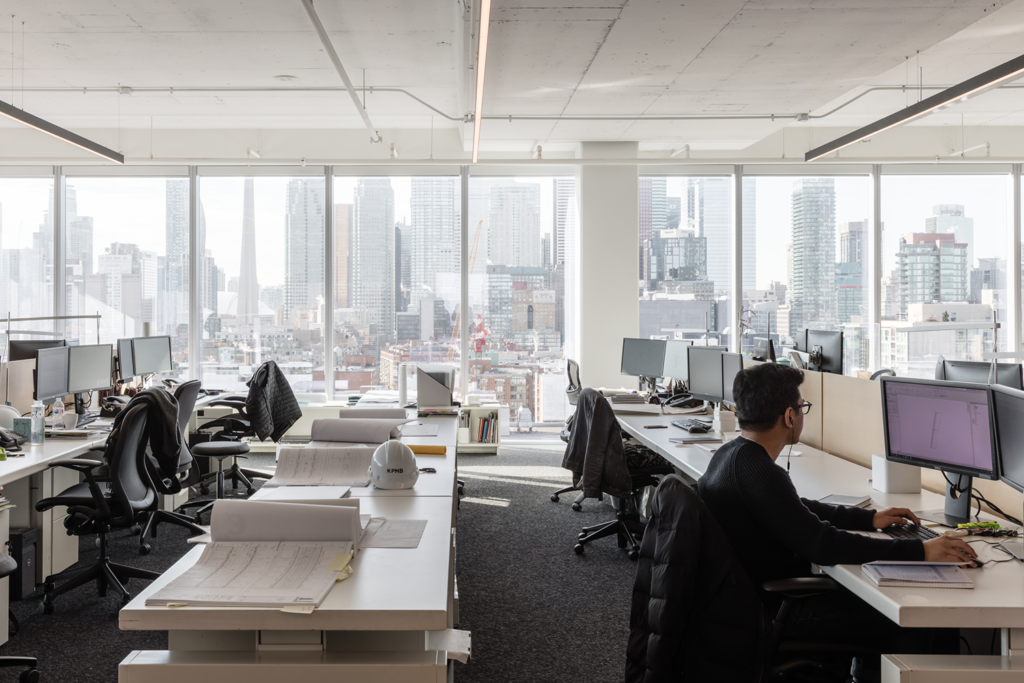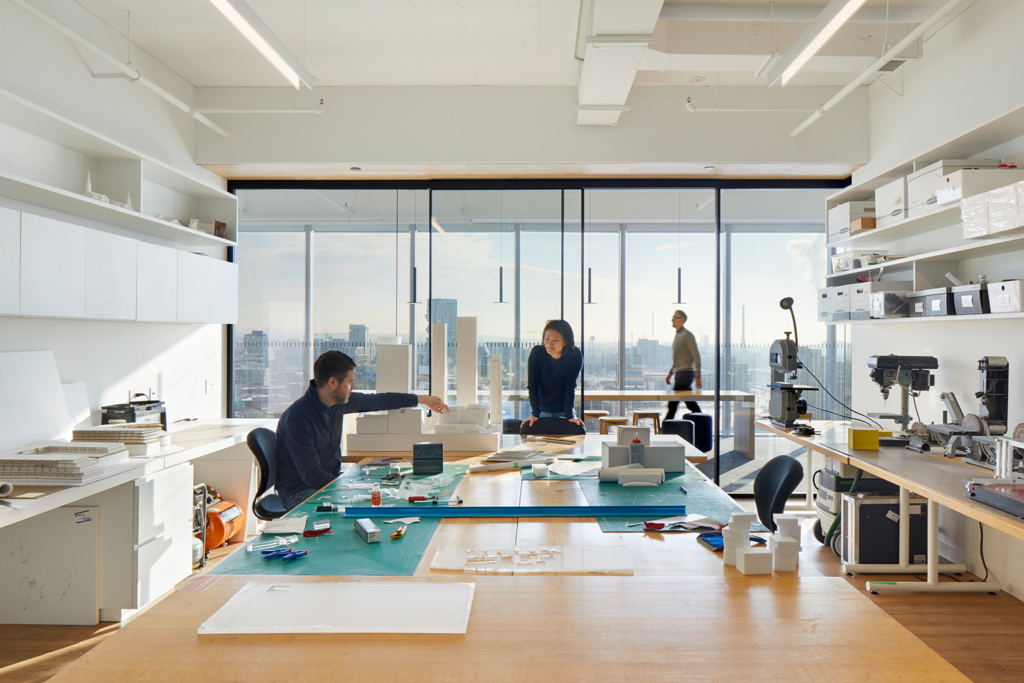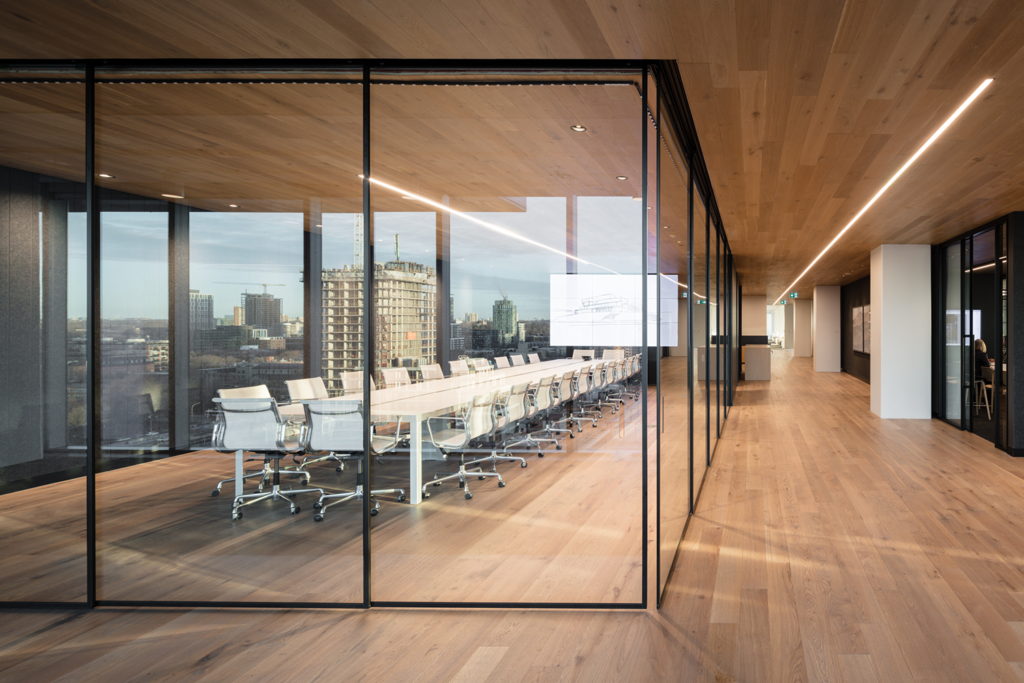In our Workspace series, BC presents interesting, intelligently designed and unique spaces across Canada. From innovative home offices to out-of-the-box co-working spaces and unconventional setups, like this beauty company that ran out of a rural farm and this carbon bike company. Located in a former auto body shop, we seek to showcase the most exclusive and beautiful spaces across all industries. This month we are profiling the Toronto office of KPMB Architects.
KPMB Architects had been operating out of the same 19th century industrial brick warehouse in Toronto’s entertainment district since 1987, occupying around 1,579 square meters over two floors. The firm has worked on high-profile projects across the continent, including renewal and the expansion of Massey Hall in Toronto and the Boston University Center for Computing and Data Sciences. But in 2018, the company received a notice that its office building was undergoing renovations; they had just under a year to find a new place, renovate it, and move on. Two of KPMB Architects’ partners, Paulo Rocha and Kevin Bridgman, were tasked with finding and co-designing a space where their staff of 110, including marketing departments and business development teams, could work, collaborate and generate ideas together.
After securing a lease on the entire 12th floor of the Globe and Mail Center in Toronto, which spans 2,322 square meters, Rocha and Bridgman mapped out a design that echoed the company’s own ethos for office interiors. Instead of executive offices hogging the main space along external glass walls, KPMB opts for a more equitable layout that places all employees at rows of open desks next to each other. “There’s nothing more hierarchical than private offices with all the windows,” Bridgman explains. “Everyone else gets very little light if the executives decide to leave the blinds closed.”
White oak hardwood was used for the flooring and walls of the office’s central meeting and meeting spaces, echoing the heritage feel of his previous office. “The warmth of the wooden beams and ceilings of our original workplace inspired us to bring a similar warmth to our new space,” says Rocha.
The firm also benefited from many updates from its previous office. They’ve grown from three meeting rooms to 12, including a boardroom with retractable glass walls that can accommodate large meetings and whole-team events like town halls. The old office did not have enough space for a dining room, but the new space has become a natural meeting point for staff to gather for coffee and lunch. KPMB’s lunch lounge features black and blue leather armchairs from HAY’s About A Lounge armchair series, a 14-foot island topped with SapienStone porcelain, and oak wood communal tables by Andreu World.
Since then, the company has grown to 155 people with a hybrid work model where staff work in person three days a week. Here’s a look inside.
